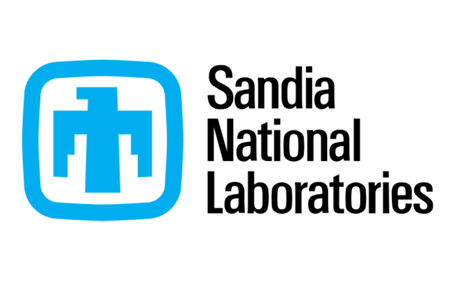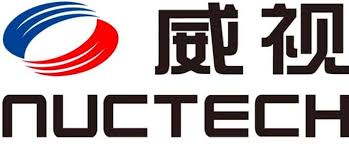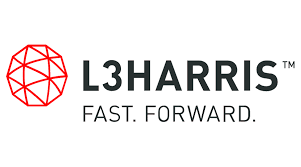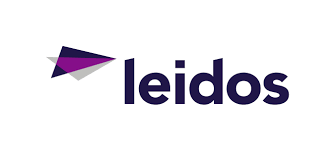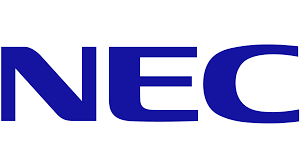Homeland Security Research Corp. (HSRC): Multi-Billion-Dollar Global X-ray Security Screening Market to grow 33% by 2024
Homeland Security Research Corp. (HSRC): Multi-Billion-Dollar Global X-ray Security Screening Market to grow 33% by 2024
WASHINGTON DC, May. 30, 2019
Homeland Security Research Corp’s (HSRC) newly published report– X-Ray Security Screening Systems (Aviation, Maritime, Land Transportation, Defense, Postal, Perimeter, Building, Baggage, Cargo, People, Container & Vehicle) Global Market – 2019-2024, is the industry’s gold standard for X-ray Security Screening Systems’ market information, trends and forecasts.
There have been no other events in the last half of the century that have had a greater impact on the global X-Ray Screening arena than the September 11, 2001 attacks by the Islamic terrorist group Al-Qaeda against the United States.
Despite years of development in screening technologies for weapons and explosives, there is no competitive modality in the market that challenges the cost performance of X-Ray screening technologies. Therefore, HSRC, forecasts that this multi-billion-dollar market will grow 33% by 2024.
By 2015, more than 4.1 billion air passengers and more than 13.9 billion passengers’ items have been screened. There are 1640 cargo and scheduled passenger flight airports in 175 countries worldwide – ranging from large, international hubs to the small, rural airports. The aviation industry forecasts that by 2025, the number of air-passengers will reach more than 9 billion per annum worldwide.
There are over 6,500 scheduled airline passengers screening lanes worldwide. The lion’s share of these lanes includes cabin baggage X-Ray screening systems. In contrast to the past, several airports embarked on a policy of adding a 3rd X-Ray screening system for every two-cabin baggage X-Ray systems. On average, each airline passenger carries 0.8 to 1.2 cabin bags and 1-2 checked luggage items depending on type of flight (domestic, international, business or leisure). On a global level, more than 16,000 freight forwarders place unscreened packages on scheduled passenger flights heading to the United States and other major market destinations.
In the U.S. alone, there are over 4,000 freight companies. FedEx and UPS alone ship a combined 40,000,000 items per day and 9 million of those packages are shipped on scheduled passenger flights. By 2018, only 740,000 packages were screened. According to the AAPA, aviation security costs the air transport industry and governments more than $22 billion per annum.
The MEA are facing a surge of explosives and weapon borne terror attacks and threats representing challenges with a far greater reach than their economic ones. This alarming situation shows no signs of declining. Europeans are experiencing a new disturbing reality in which explosives and weapon borne terror is their “new normal”.
The market will undergo a major transformation due to the following drivers:
- Terrorists use of both military grade weapons and hard-to-detect (by X-Ray technologies) homemade improvised explosives.
- European security bodies will have to replace or upgrade their X-Ray explosive screening systems to new systems capable of detecting improvised explosives like those used in Paris, Istanbul and Brussels.
With no “Magic Bullet” technology in sight that replaces the X-Ray technologies, the challenge that remains unresolved is to find out how to stop terrorists from detonating explosives in crowded, unscreened public areas. Even with a preference for locally manufactured products, foreign products can usually strongly compete on the basis of cost-performance. They do not encounter any EU direct trade barriers or quotas. Non-tariff, indirect trade barriers may be the approval process of dual use goods, which include many security market products.
The European Union is in the process of implementing a rigorous technology certification process and is requiring European airports to implement significantly improved checked luggage technology.
On 25 December 2009, the attempted terrorist attack with hidden explosives on NWA Flight 253 highlighted the limits of metal detectors, commonly used at airports, in detecting non-metallic threat items on persons. As an immediate reaction several countries, in particular the United States, have accelerated the further development and eventual deployment of more advanced technology capable of detecting non-metallic and liquid explosives. This includes the deployment of advanced imaging technology units or “body scanners” (AIT), designed to give airport security staff a much better chance of detecting explosives or other potentially harmful items hidden on a passenger’s body.
The concerns raised on the use of security scanners for screening at airports relate primarily to two issues: the creation of body images and the use of X-Ray radiation. Firstly, until recently all security scanners produced images of the screened person’s body in order to allow a human reviewer of these images to assess the absence of items prohibited from being brought on board aircrafts. Secondly, part of the security scanner technologies emits low doses of radiation, ionizing (X-ray) and non-ionizing, for detection purposes. In particular, the use of ionizing radiation raises health questions.
In November 2011, the European Commission adopted a proposal for a European Union legal framework on security scanners. This legislation allows airports and member states that wish to use security scanners (which do not use ionizing radiation) for the screening of passengers to do so under strict operational and technical conditions.
The X-Ray -based security procedures introduced since 2009 are real, but the costs have not been factored in. These new X-Ray based screening methods which are observably slower than the methods they replaced, impose additional losses on travelers who could more productively use their time on leisure or business than moving through airport security. In addition, the new security measures seem likely to deter some people from traveling at all and to push others into different modes of transportation. In the case of the former type, the result would be additional losses imposed on the economy.
X-Ray screening systems are labor intensive, and their use entails a high cost of screeners. Despite of the proliferation of TIP, dual-energy and multi-view X-Ray technologies, the bottleneck in the modality are the human factor.
Red Team studies proved that 30-70% of threats are overlooked by airport X-Ray operators. While X-Ray screening is effective in metallic weapon screening, it has a limited performance in explosives detection.
Since 9/11, terrorists have developed advanced threats using liquid and plastic explosives that do not have recognizable shapes or densities. These explosives can be poured into bottles, molded into baggage walls, made like shoe soles or shaped to look like laptop computer batteries hidden in the cluttered content of screened luggage or in baggage and containers that can easily slip through X-Ray inspection checkpoints. Coherent X-Ray technologies have the potential to overcome these limitations, but due to their high cost and long screening time, this technology captured a small fraction of the market.
The current global installed base of X-Ray screening systems includes over 180,000 units. Most systems are installed at airports, secured facilities & buildings, public gathering sites, land transportation checkpoints and mail processing sites. Following years of failed air-cargo screening infrastructure, there is an enhanced pressure on policy makers to deploy effective Air-Cargo screening means including X-Ray screening methods.
The threat and fear posed by potential suicide bombers is real, persistent and likely to stay. It will continue to be the key to market development.
For more information, or to purchase a copy, please visit us here
Other reports focusing on specific technology or vertical markets related to the homeland security and public safety market include:
- Global Homeland Security & Public Safety Market – 2019-2024: 8-Volume Mega-Report
- Public Safety & Homeland Security Technologies Market – 2019-2024
- Explosives Detection Systems Market, Technologies & Industry – 2018-2025
- Anti-Drone Market & Technologies – 2018-2023
- Big Data & Data Analytics Market in National Security and Law Enforcement – 2019-2022
- OSINT Market & Technologies – 2019-2022
- Safe City Market, Technologies & Industry – 2017-2022
- Europe Public Safety, Immigration Enforcement & Homeland Security Markets – 2017-2022
- Explosives Trace Detection Market & ETD Technologies – 2017-2022
About Homeland Security Research Corp. (HSRC)
Homeland Security Research Corp. (HSRC) is an international market and technology research firm specializing in the Homeland Security (HLS) & Public Safety (PS) industry. HSRC provides premium off-the-shelf and customized market reports on present and emerging technologies and industry expertise, enabling global clients to gain time-critical insight into business opportunities. HSRC’s clients include the U.S. Congress, DHS, U.S. Army, U.S. Navy, DOD, DOT, GAO, NATO and EU, among others; as well as government agencies in Japan, Korea, Taiwan, Israel, Canada, UK, Germany, Australia, Sweden, Finland, Singapore. With over 950 private sector clients (73% returning), including major defense and security contractors and Fortune 2000 companies, HSRC earned the reputation as the industry’s Gold Standard for HLS & PS market reports.
Washington D.C. 20004, 601 Pennsylvania Ave., NW Suite 900,
Tel: 202-455-0966, info@homelandsecurityresearch.com, hsrc.biz



